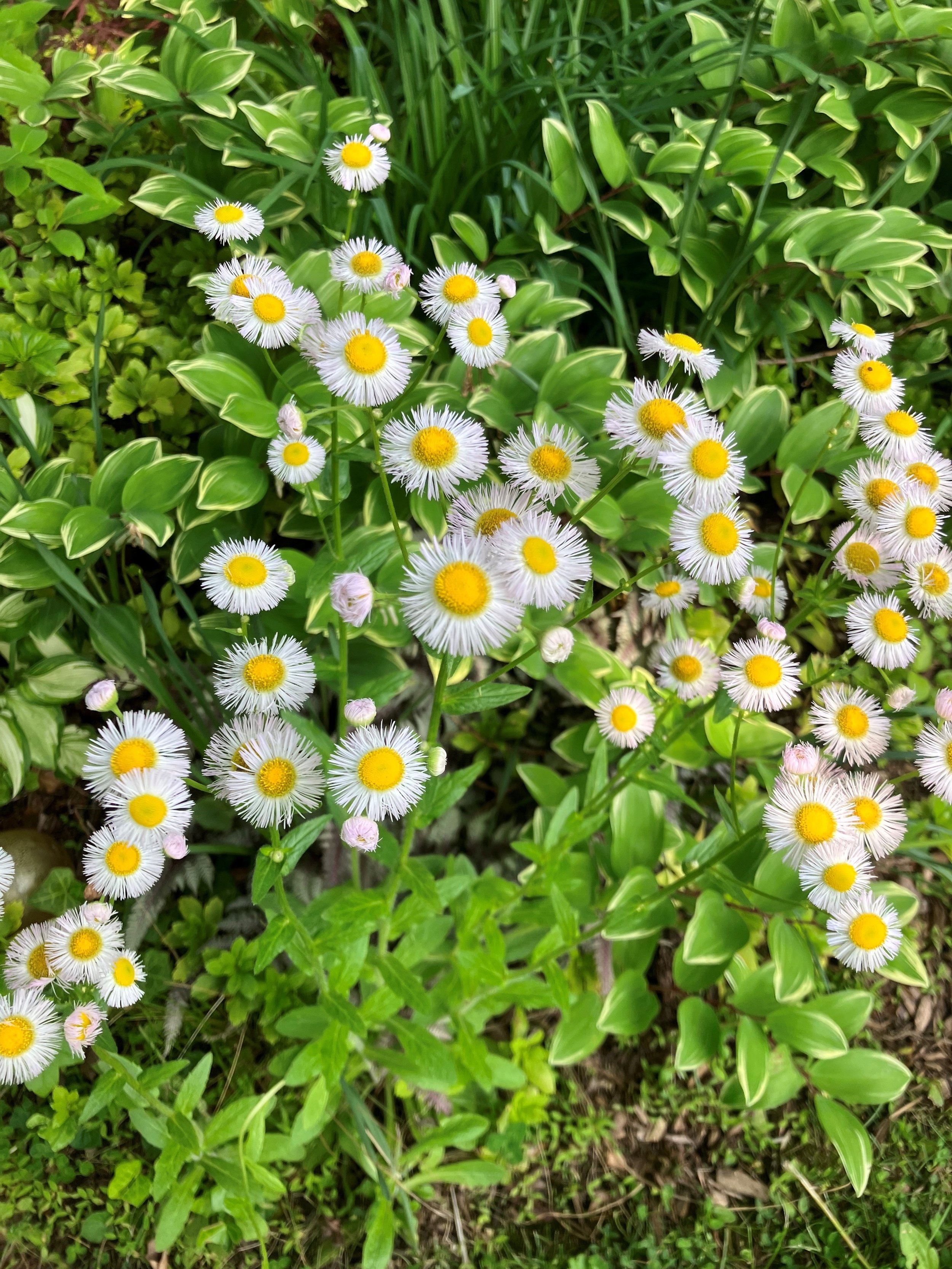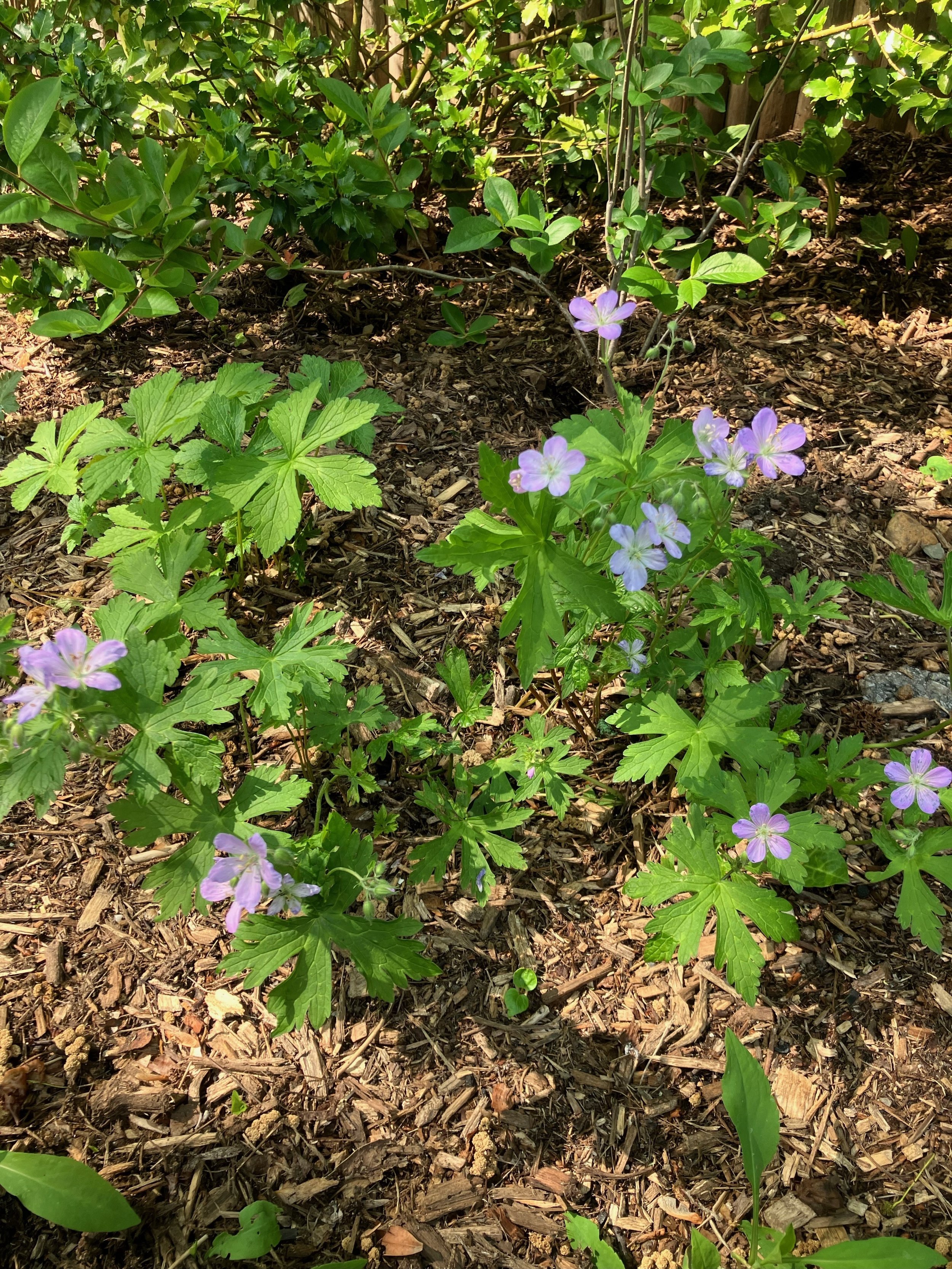Mindful May: Renewing Connections to Our Yards and Gardens
Collected and reported by Laura McKellar
In May, ReWild Long Island celebrated “Mindful May,” a month in which gardeners reconnect with their gardens and with the rest of the natural world. We asked gardeners to send us their observations, reflections, and photos and to tell us about what they were doing to be mindful in their yards. The responses were beyond our expectations, not only in the number of submissions we received, but also in the joy, love, and beauty that these writers expressed. Some folks stopped mowing for the month, while others changed when or where they mowed. Some folks planted native plants or ripped out invasives. Others took time to observe the beauty of their gardens and experience the joy of seeing the insects, birds, and mammals who visited their gardens. These gardeners not only reconnected to the beauty of their yards but also enhanced and benefited the natural world in which we all live. Here are some excerpts from the submissions.
Mindful Mowing
Dianna Facci (Port Washington, NY)
The dewdrops in the morning glisten like strands of diamonds on the tall grasses. A beautiful early morning sight that was not to be missed …. The tall grasses that grew helped the cardinal fledglings who made their home in my garden. (Lucky for me !!) The fledglings were able to hide within the tall grasses, darting in and out … distracting and escaping from the feral cats that roam our neighborhood.
The fledglings were not so exposed, so they were able to survive the first few crucial days after leaving their nests!
I noticed places where wildlife rested by the sight of flattened grasses …
Dianna’s homemade sign
Another of Dianna’s homemade signs
Dewdrops on Dianna’s grass
Flattened grass showing signs of wildlife
Amy Paradise (Hampton Bays, NY)
I observe this every year in my no fertilizer, no pesticide, “let it grow as it will” yard. I am constantly delighted by the random flowers that appear. Most are tiny. Grass actually flowers, mostly white. People miss out on so much with their perfect landscaped yards.
Having seen the explosion of life when I left the deadfall from an old oak, I now choose to keep a hedgerow where all my old limbs and branches go. In the fallow areas of my yard a cedar and holly forest is sprouting. A wild peach tree showed up then chokecherry. An Orchard oriole this year, a Fox Sparrow. The first butterflies… small white ones. Last year there was a Thrasher. And an important denizen, a box turtle.
Amy Paradise with her garden
Amy’s garden during No Mow May
native plantings
Kevin Moriarty
I am not really a proponent of No Mow May, as I believe that the plants that emerge from a lawn may not be as beneficial to your ecosystem as would be if you were to remove some of the grass and intentionally plant a native plant garden. Here’s a picture of my front yard after removing the English ivy that covered half of the yard.
Kevin’s front yard
Beth Epstein
I planted a native garden in the fall. I check it regularly to see what is growing. Not all of the plants came up. That is disappointing. I will try getting new plants for those areas as I really want it to work.
Across the street from me is an industrial area. Between the buildings and the street there are many invasives. I removed what iNaturalist identified as a tree of heaven sapling and garlic mustard from my property this week.
Yesterday I put out my hammock under my sweet gum trees. I enjoyed noticing how birds love to hang out in my trees although they don’t nest in them. Carolina wrens especially love them.
Veronica Lurvey (North Hempstead, NY)
Last year, without help, we planted a variety of natives that we thought would bloom at different times of year: white woodland aster, for late summer blooms; blue wood aster, for early fall blooms; summersweet, which - if it thrives - will serve as an attraction to butterflies and songbirds; and heuchera americana to provide some ground cover. We hope that the swamp milkweed we planted will be part of a monarch waystation and supplement the milkweed that was so graciously provided by the butterfly lady at the Old Bethpage Restoration Farm, the CSA where we belong.
This year, we figured that we may need assistance, but the garden is looking quite good…
When we moved to this house the soil wasn’t great. It lacked life. Honestly. It was not good and made me sad. We pulled some large shrubs out from the front yard and the earth felt sterile. Now, when we plant, we work our own compost into the soil. I think we didn’t do it quite right because we were surprised to see tomatoes and other vegetables growing side by side with our flowering perennials! But now we see earthworms also. Just a few days ago on Mothers Day we planted some new flowers and saw so many earthworms!!
I have a copy of the Peterson Guide to North American Birds, which has come with me from childhood. This year has been the first year I’ve been able to note goldfinches. Real yellow goldfinches. I’m 52, so it’s taken half a century for me to spot one in my backyard. My favorite birds must be the various woodpeckers, and I have seen flickers as well as downy or hairy woodpeckers (who knows really?) at our feeders with one taking up residence nearby.
Experimenting with a variety of landscapes is exciting and definitely the right thing to do for the environment.
Veronica’s fleabane
Veronica’s geranium
Creeping buttercups in Veronica’s lawn during No Mow May
Catherine Halpern (East Northport, NY)
I started adding plants to my property somewhere around 2007. Over the years, as I gained knowledge from my own research and through trial and error, I started to realize that my plant choices could help welcome wildlife to visit and maybe settle in my yard. Our family are avid bird watchers and lovers. We also enjoy chipmunks and rabbits and over the last ten years have started to be fascinated by pollinators and other bugs. I am excited to be contributing to the BLING citizen science project by posting pictures of all the interesting creatures I find to iNaturalist. Although my property is only 1/5 of an acre, we are amazed at the amount of wildlife that has taken up residence since I have added over 30 varieties of native perennials, shrubs and trees.
About 15 years ago, I started growing plants from seed, first out of economy but now out of love for the activity. There is something so hopeful about putting a seed in a pot, taking care of its every need and being rewarded with a healthy plant. Most of the perennials in my garden were grown from seed! This year I have been almost too successful, but I am determined to find a place for all my new plants!
I have also been removing invasive plants from my yard and I welcome the volunteer native plants that have been showing up, wood aster, jewelweed, violets, evening primrose and fleabane. I have been working hard to include plants that bloom in every season.
This May I was happy to see the number of native plants that bloomed during this month: Redbud (Cercis canadensis 'Merlot'), Pink Dogwood (Cornus florida), Red Twig Dogwood (Cornus sericea), Wild Geranium (Geranium maculatum), Golden Alexander (Zizia aurea), Arrow Wood Viburnum (Viburnum dentatum), Native Wisteria (Wisteria frutescens ‘Amethyst Falls’ - Dwarf American Wisteria), Fleabane (Erigeron annuus).
Catherine’s native plants started from seed
Catherine’s pink dogwood
Catherine’s red twig dogwood
Catherine’s native wisteria
Catherine’s redbud in bloom
Catherine’s golden alexander
Catherine’s fleabane
Catherine’s arrowwood viburnum
Catherine’s wild geranium
Leonard Green (East Hampton, NY)
I confess. I don’t care for No Mow May. I prefer Mindful May, and if that isn’t catchy enough, then how about Slow Mow May?
Before buying a battery powered mower, I always relied on old fashioned manual mowers. I liked the exercise, and an added pleasure was the slowness of it all. I got the chance to look deeply at what I was cutting. These days I suppose we might call it mindful mowing, maybe even walking meditation?
I never had what most people today call a lawn, that chem-green carpet my neighbors cultivate with teams of “lawn doctors,” irrigation technicians, pesticide applicators, and the noisy salt-of-the-earth mow and blow guys. My lawn still held on to the wild from which it had been snatched. It was and largely remains a scrubby mix of native and invasive grasses, mosses, and to my delight, native forbs and woody species. Pushing my reel mower around the lot, often having to pass two and three times over stubborn areas, I loved what I began to notice: emergent low bush blueberry, striped wintergreen, pussy toes. As I slowly realized what was hiding in my yard, I began to mow around these areas, leaving Island of undisturbed vegetation. But then there were the deer. They too began to notice the tender green shoots that I had saved from the mower. My next step was to fence these little islands, enclosing them behind small fences, spaces small enough to deter the deer from jumping inside them. That also ensured that I would not be doing any mowing there. Over the years, these little Islands have become miniature native woodlands. Uncut and sheltered from the deer, white and pitch pines, low and high bush blueberry, little bluestem, wavy hair grass, trailing arbutus, striped wintergreen, Canada mayflower, pussy toes, sweet fern, lichens and mosses, Maryland asters, flourish. These island groves are developing their own tiered structures: ground cover, under and over story. Fascinated by this example of natural succession, I decided to convert the remainder of my “lawn” into meadow. But that is another story…
Len’s striped wintergreen
Len’s island sheltered from mowing and deer
Len’s Jack in the pulpit among mayapple
Len’s packera aurea
Duong Vu (Dix Hills, NY)
My no mow lawn did not attract many pollinators in the early spring. During April and early May the bees are busy within the leaf litter area or the wood chip mulched area. They surrounded the crabapple trees, blueberry bushes and the strawberry patch. The dandelions in the lawn were ignored for the most part. The portion of lawn that was sod did not get much growth and there were no pollinators there. The rest of the lawn that was cool season grass or seeded over the years, did grow tall. Birds come and go. I can’t definitively say they are attracted by the tall grass because I see them on the neighbor’s mowed lawn too. The resident rabbit was the only creature happy with that and got very comfortable settling in. I had a 5-minute standoff with it, trying to get it to move so I can get by. I lost. I went around and the rabbit got to enjoy its dinner in peace.
I saw an oak seedling in the lawn, but it quickly got overshadowed by the tall grass. I marked it with a tree protector and hopefully can transplant it in the fall when it’s dormant. I also have hairy bittercress, multiflora rose and bittersweet galore. They are everywhere! I mowed twice in April to control the hairy bittercress, catching their seed heads and pulling them out by hand in the garden beds. The end of May is when I focus on pulling out the bittersweet seedlings and multiflora roses in the garden beds and along paver cracks.
A bee on Duong’s blueberries
An early season bee in Duong’s leaf littered garden bed
A multiflora rose seedling in Duong’s lawn
An oak seedling in Duong’s lawn
Duong’s stand off with a rabbit




























